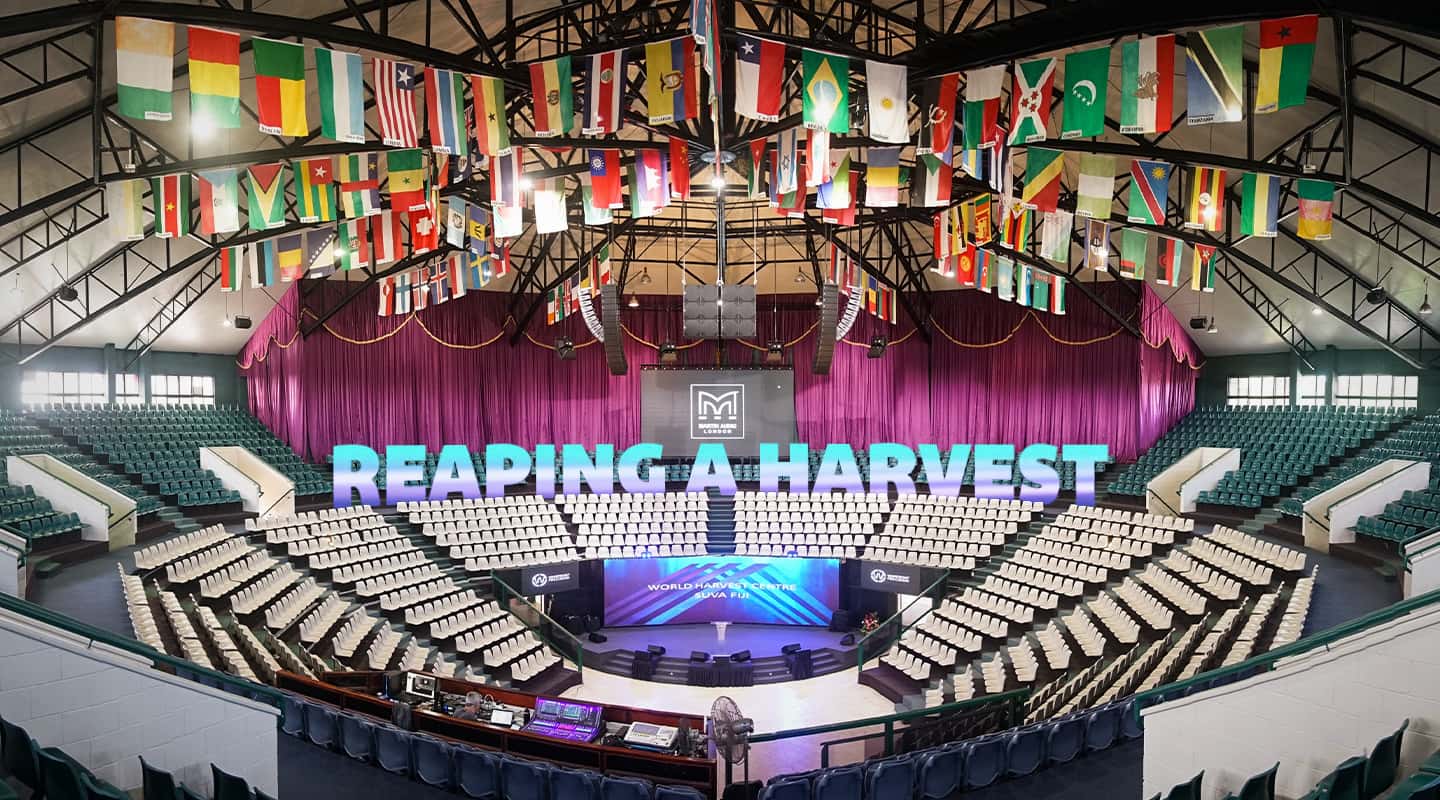
AV Case Study: World Harvest Centre
CVAV pulls off a comprehensive and logistically-challenging system upgrade in Fiji’s World Harvest Centre.
Text:/ Preshan John
Christian Mission Fellowship International (CMFI) is a rapidly growing church headquartered in Suva, Fiji. Established in 1990, its 30,000 members and missionaries serve in 120 countries across 5000 churches worldwide.
CMFI is headquartered in Suva at The World Harvest Centre (WHC). WHC has an impressive, round church building with over 3500 worshipers, a full band, production, and a 100-member choir.
Since its construction in 1990, the centre has installed numerous sound systems; however, none have been able to overcome the challenges of the large reverberant space and the sound quality requirements of the growing church.
Enter Head Pastor Suliasi Kurulo, who finally decided that the time had arrived to call in the professionals and deliver the dream to its members.
Deciding to award a significant project like this required more than just proving that the system would technically work. It also meant trusting that the selected company understood Fiji’s culture and involved them in many aspects of the installation and its production techniques. Unlike most projects where a company installs the system, this project required a deeper level of engagement and collaboration.
After many proposals and CAD models, Head Pastor Suliasi, his production crew, and the committee awarded the project to Carey Leghorn from CVAV Australia based on a Martin Audio solution.
ABROAD SCOPE
Carey, together with Anthony Russo from Technical Audio Group, Martin Audio’s representative, made several visits to WHC to evaluate the scale of the project, create a design that would meet the brief’s requirements, and assure the church that this would be a unique partnership.
From Carey’s viewpoint, “This project was one of the most difficult I had ever worked on. We faced several challenges, from working at 15m heights for PA rigging to custom steel fabrication on site. Additionally, we had to install several kilometres of cables through a complex roof structure. Also, much of the fabrication had to be done in Australia with no room for error once the project was containerised and sea freighted.”
Choosing the final speaker design of the system involved hundreds of hours of modelling, with the final decision to use a Martin Audio WPM line array system with processing and amplification from a Q-SYS System. The church preferred to retain and improve some of the existing Q-SYS backbones and converge them with the Martin Audio system.
Anthony takes up the project overview: “During my many visits to the church, I sat in on many services and envisioned the many aspects of the system design and how to conquer the space. Moreover, I was emotionally moved by how much effort and love this space intertwines with every congregation member’s life.”
The services are major concert events with 3000-plus people singing, supported by a full band and choir. Therefore, the system had to achieve higher than normal SPLs and provide a unique experience generally associated with an international touring act.
“I believe every seat needs to be the best seat, all while trying to keep an eye on a budget. There is a fine line where you can’t compromise,” says Anthony.
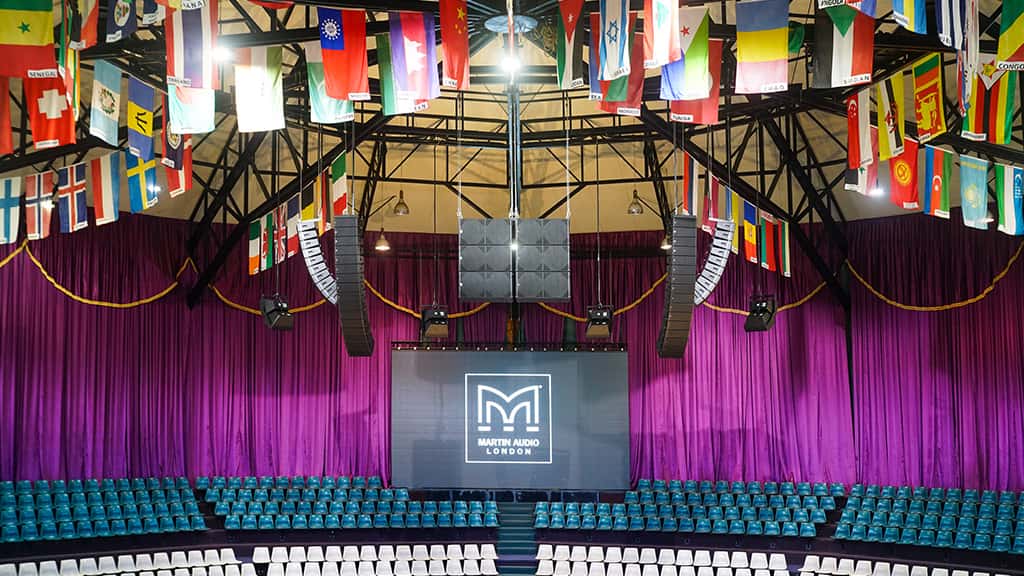
PA SYSTEM DESIGN
Martin Audio’s DISPLAY prediction software was used to design a 56-cabinet WPM system, which proved the optimal solution. The main hang consists of a 32-cabinet left and right system, along with a ten-a-side WPM operating in two-box and one-box resolution modes, respectively.
The extensive array system is supported with six Martin SX 218 speakers to provide 12 x 18-inch sub-bass speakers. Each driver is individually processed and amplified. Despite the challenges posed by the rigging and structural steelwork, the CVAV crew achieved the seemingly impossible feat of hanging a centre cluster and allowing beam steering of the sub-cluster, thereby implementing a textbook solution.
“Once I saw it hang together in place, it was a dream moment for me,” commented Anthony. “It’s extremely rare to get subs in that position in churches, where projectors, site lines, and roof weight loadings often constrain you. This results in compromised split left and right subs and the inevitable power alley and off-axis cancellations.”
The choir stalls are covered with eight individually amplified and processed CDD 12 two-way cabinets from Martin’s Coaxial CDD range, ensuring maximum coverage and performance. The main console provides a tailored mix send depending on the choir’s requirements.
An eight-cabinet, 12-inch two-way delay system from the Martin BLX range was installed to complement the main system. While not essential, this system enhances the overall experience for the rear congregation and optimises the coverage of the main arrays to the main seating area.
Three Martin CDD 10-inch front stage apron speakers supplement the front rows to complete the main system. The stage is covered by a six-cabinet LE 100 12-inch CDD foldback system.

Q-SYS PROCESSING
With such a remote location and mission-critical status, nothing was left to chance regarding the headend equipment.
The main system processing is controlled via a Q-SYS Core enterprise-class 610 unit driving 17 Q-SYS 8K and 4K series QLAN amplifiers installed in two remote amplifier rack rooms.
The 610 was chosen for maximum reliability and the processing power required for the number of FIR system filters and processing blocks. Furthermore, a 610 future-proofed the church for its expansion plans on site.
Netgear AV 4250 switches handle all network traffic on Dante and QLAN protocols. Remote access is via a Lenovo NUC, which enables remote desktop access or Reflect management from Q-SYS servers.
APC Systems’ UPS provided uninterrupted power backup to Suva’s unpredictable mains, enabling continuous operation during brownouts for the core, switches, and FOH console, resulting in a faster system restart.
The cable system design utilises both digital and analogue network feeds running in parallel. Carey stressed the importance of reliability and that they had to plan for every possible scenario. Fortunately, with Q-SYS, two backup levels are in place. If a data cable is cut, spare A&B LAN lines are available. If a switch or core fault, Q-SYS allows all amplifiers to run in standalone mode. This means the analogue feed can take over, with enough onboard processing to ensure the service remains uninterrupted.
A patch bay system was installed at each rack location for the main desk, which allows any mixer or source to be substituted in an emergency.
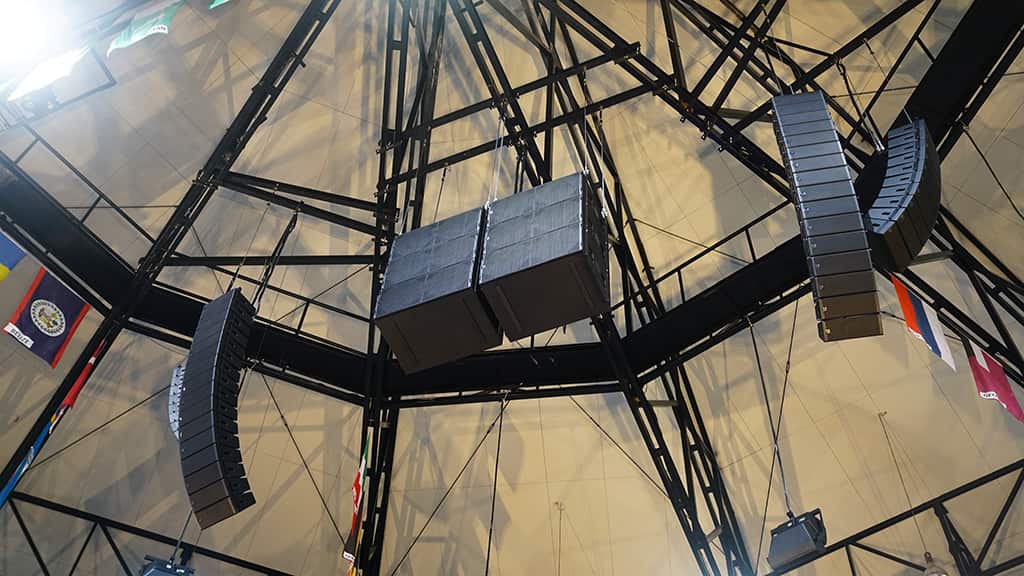
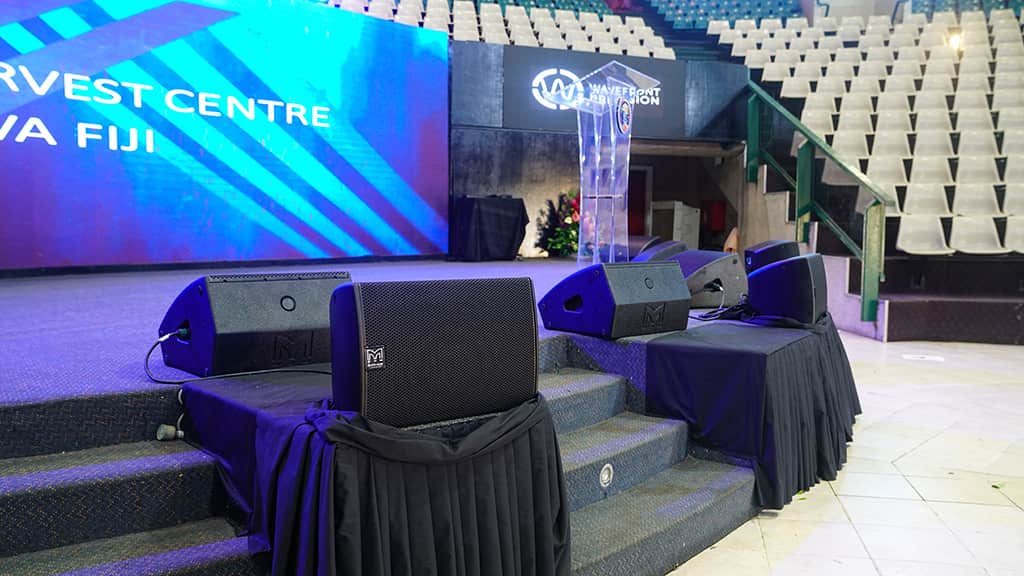
USER CONTROL
“The complexity of the WHC system makes it challenging for users to identify faults, even with an engineering background. Anthony points out that “it’s nearly impossible to detect issues like one sub driver of 12 not working or the second box in a 16-way array is malfunctioning, particularly when the system is 12m in the air. However, detecting such faults can become significantly easier with the right software tools.”
Carey and his team created peace of mind by developing an advanced, user-friendly graphical user interface (GUI). Using the power of Q-SYS, they designed a touchscreen interface with specific test pages which allow the WHC crew to conduct a stepped pink noise test on each speaker before services. Furthermore, the team loaded a music library on the core, providing staff with a reference track to refer to when needed. A simple on-screen button push starts the test sequence both visually and audibly. This enables operators to see a pictorial representation of the system and hear as each cabinet is checked, along with associated power meters and impedance readings.
All Q-SYS amplifiers and peripherals are constantly monitored for health status, and if needed, email alerts are sent to TAG support in Australia.
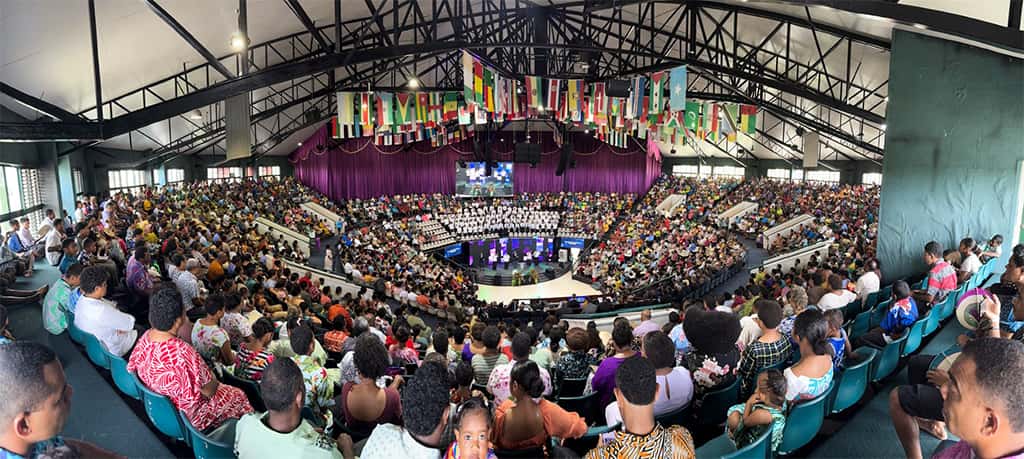
dLIVE & WELL
Principal sound engineers at WHC, Siasailosi Dokonivalu and Kit Mateyawa, had been using Allen & Heath iLive and SQ7 consoles for their live and broadcast operations for many years. Given the pending new sound system and the increasing complexity of productions, urgent discussions were had on whether to upgrade their existing consoles to an A&H S5000 dLive console with a 48-channel Dante rack.
After reviewing dLive’s improved workflow and 96kHz capability, the team lobbied the church to invest in the console. Finally, Andrew Crawford from TAG, tasked with providing training in Fiji to all WHC churches, green-lighted the idea. Over 50 crew based throughout Fiji would be invited for an intensive four-day training course in Suva.
LOGISTICS
From CVAV and TAG’s experience managing overseas projects, meticulous planning was required to ensure success. Nothing could be left to chance, from the smallest rigging nuts and bolts to cabling and tools.
Given the significant investment, WHC dispatched Joe Kurulo and their trusted production manager Vatu Weleilakeba to Australia to inspect every item before dispatch.
Joe and Vatu were very impressed with the professionalism of the team during his inspection. “I was able to review the frequency response of each speaker on paper before packing, and every electronic item underwent soak testing for over a month. Additionally, I could inspect the preassembled racks and was thoroughly impressed by the attention to detail that the team was putting into the project,” said Vatu.


D-DAY: THE INSTALL
The team loaded ‘kitchen sink’ style and shipped everything by sea with a tight three-week target to complete the project. The deadline for D-Day was for Pastor Suli and the choir’s return from their USA tour. Carey, his leading technicians Lachlan Crawford and Simon Tanner, and Anthony supervised the assembly of the giant jigsaw puzzle. The church’s willing volunteer team of over 30 crew members was on hand to assist and learn. At this point, the ‘team’ turned into a force with the WHC crew.
Anthony and Carey realised that their expertise in everything from rigging, safety, cabling, and soldering could benefit the community. Anthony coined the term ‘University’ to describe their opportunity to educate and mentor enthusiastic young people with a lifetime of valuable skills that could never be found in books or online.
The team faced one of their toughest installations due to sweltering heat and 90% humidity, which made it challenging to work at 15m heights in a full rigging harness with tools.
With only a week left until D-Day, the team grew when TAG’s Andrew Crawford arrived to provide dLive training for the local technicians and renowned electro-acoustic expert David Gilfillan for system tuning and commissioning.
David spent four days meticulously analysing hundreds of computer measurements, double-checking each measurement and questioning everything, especially given the unusual space and system complexity.
THE RESULT
After completing the objective measurements, the team gathered to conduct a subjective analysis. This analysis included reference playback material and live band performances. Only after this step was completed could the final sign-off be given.
Anthony points out that only experienced ears can make the final decision on system balance. Pure measurements alone will never suffice. “A half dB here or there, or a fine ratio adjustment on a compressor, can make all the difference. Well-engineered systems, if aligned correctly, respond to even the slightest changes. Even then you need to keep checking what you think you hear vs what the measurement mic shows you.”
D-Day arrived and culminated in one of the biggest moments for not only the church but also for Fiji, with many island dignitaries in attendance and streaming to thousands online.
In a rare invitation, Anthony addressed thousands on stage and, in an emotional speech, praised the church’s vision. Importantly, he stressed that this project was not about cutting-edge technology and outstanding quality, but the congregation could now truly appreciate the sound of their musicians, choir, and preachers, and even importantly, know that their production team now had new education and skills that was invaluable for their future.
Anthony, in conclusion, said, “This location had become a place of learning inspired by a team, welcomed like family by its people and, in turn, willing to share their knowledge for future generations. Simply put, The World Harvest Centre ‘University’ had arrived.“
CVAV: www.cvav.com.au
Martin Audio: www.martin-audio.com
Q-SYS: www.qsys.com
Technical Audio Group: www.tag.com.au
Gilfillan Soundwork: www.gilfillansoundwork.com.au
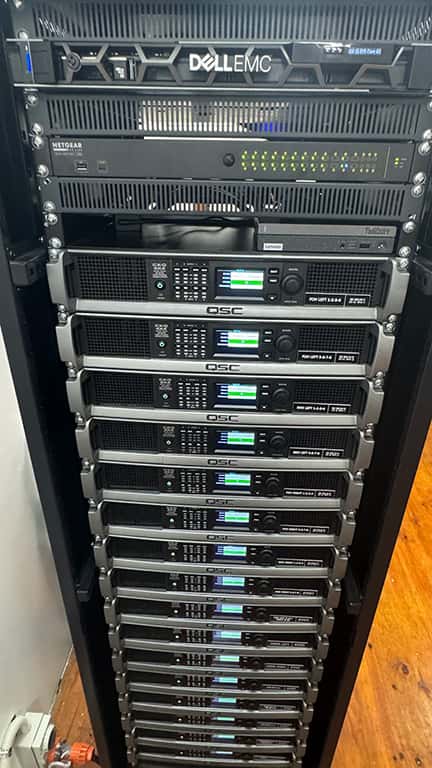


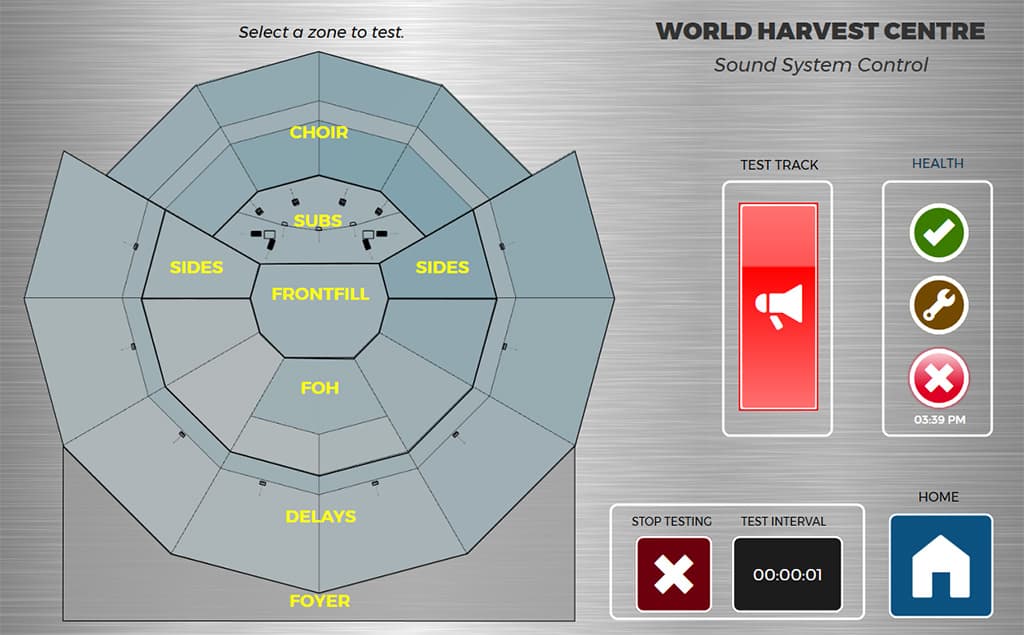








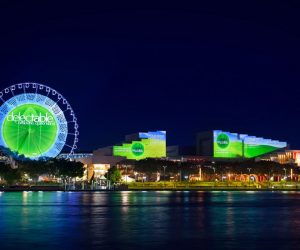

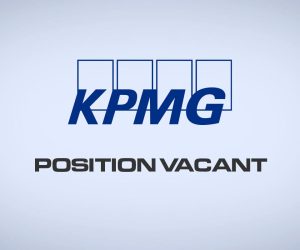

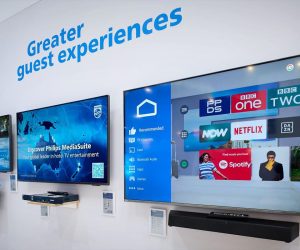


RESPONSES